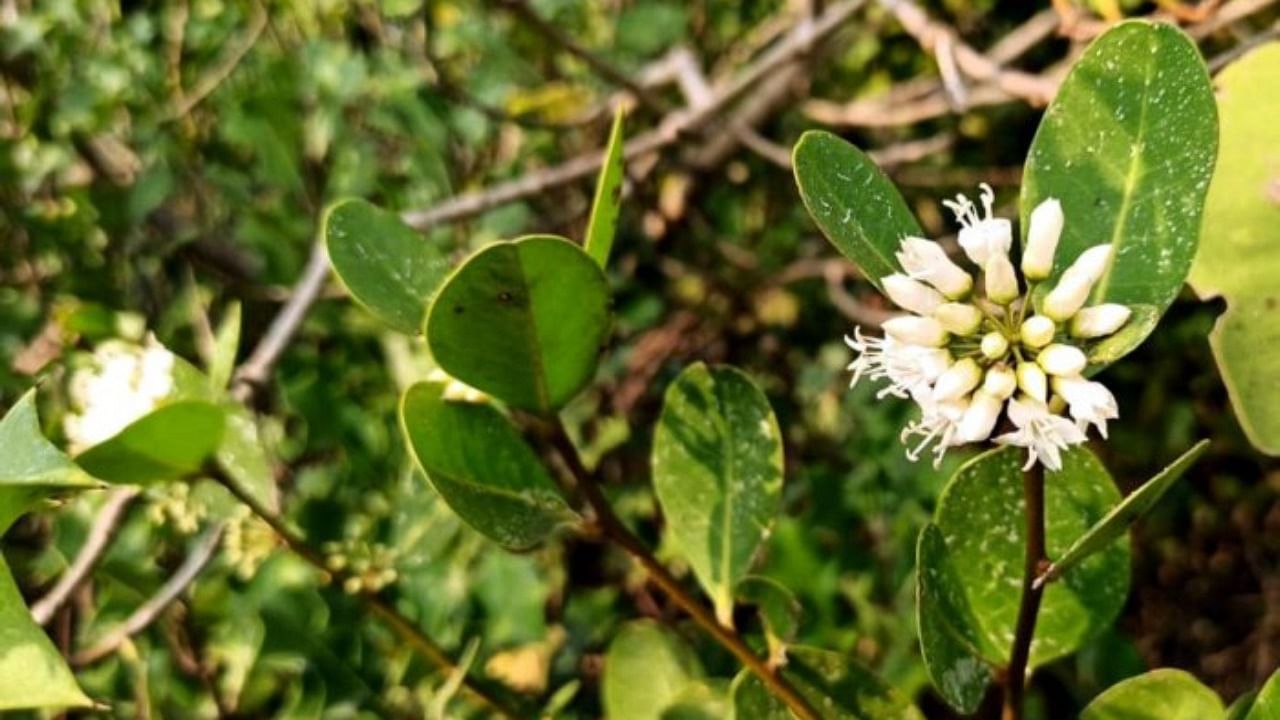
Once an integral part of the ecosystem and agriculture in the coastal areas of Karnataka, mangroves slowly lost their significance since the 1960s.
One of the main reasons for their disappearance from the paddy fields where they acted as natural bunds was the introduction of stone bunds. This led to their gradual destruction until the 1990s when efforts were launched to rejuvenate them. The pace of work really picked up after the tsunami of December 2004, which battered the country’s east coast.
The story of the mangrove revival in Uttara Kannada district involved reforestation of the native mangrove species and the active participation of the local fishing community.
Popularly called Kandla Vana or Sundari in Kannada, mangroves are a community of shrubs and trees that are woody, evergreen and salt-tolerant. Present along inter-tidal and swampy coastal waters, their exposed roots make them look like floating forests. However, this is an important feature that allows the tree to draw in oxygen while also acting as a barrier, slowing down erosion and checking the impact of major disasters like floods, storms and even a tsunami. They can sequester four times more carbon than tropical forests mitigating climate change.
In Uttara Kannada district, they are mainly found in the Kali, Gangavali, Venktapur, Aghanashini and Sharavathy estuaries with the highest concentration being in the Kali and Aghanashini estuaries. They are also present in rivulets/creeks including Belekeri, Ankola, Alvekodi and Badgani.
Awareness programmes
Beginning in the 1960s, mangrove forests in these regions were mainly destroyed to extend human settlements and take up large-scale shrimp cultivation.
The presence of upstream dams also altered the salinity of water in these regions, which adversely affected some mangrove species. However, restoration works started in 1990 gathered pace after the Coastal Regulation Zone Act of 1991, when several awareness campaigns on the importance of mangroves were conducted and projects were implemented by governments and not-for-profit organisations for planting mangroves.
However, the government renewed its efforts after the tsunami in 2004, when there were reports of mangroves acting as bio shields and lessening damage in some coastal areas.
“Owing to systematic afforestation by the forest department, there has been an increase of about 400 hectares of mangroves in the last decade in Karwar and Honnavar forest divisions alone. Following such a rise of mangroves, even the Forest Survey of India (FSI) conducted vegetation cover mapping of this area and the satellite images indicate this expansion,” said Karwar Deputy Conservator of Forest Vasanth Reddy.
There are around 20 species of mangroves in over 2,000 hectares of forest land including around 1,000 hectare in Karwar and 900 hectare in Honnavar divisions, and they are nursing homes for a variety of fish and bird species, according to Reddy.
For reforestation, the propagules (mangrove seeds) are taken and planted in empty areas. In some cases, the seedlings are raised outside the mangrove and then planted.
Community participation
Another important aspect is community participation. “Village forest communities were formed in these estuarine villages, through which awareness programmes were held. Local fishermen were told of the economic benefits of conserving the mangrove, besides being trained in other income-generating activities like honey cultivation,” said Krishna Udupudi, former chief conservator of forest.
“Apart from afforestation, we are making efforts to protect the mangroves by involving local communities in sustainable socio-economic activities. We are also encouraging mangrove tourism, which not only helps people understand the value of mangroves but also generates income for locals,” said Ganapathi K, Deputy Conservator of Forest of Honnavar.
A recent study published in the International Research Journal of Engineering and Technology also indicated that in the Aghanashini estuary alone, there has been a significant improvement in the mangrove areas from 1% to 18% between 1990 and 2019 by afforestation in abandoned salt pans and rice fields within the river. The improved mangroves along this estuary have stabilised the river bank, reducing erosion from 43% in 1990 to 4% in 2019.
However, there are several challenges with conservation.
“For the mangroves to thrive as an ecosystem, monoculture plantations must be avoided. More importance should be given to species like Avicennia and Sonneratia to improve the resilience of the ecosystem. For this, impact of the mangrove reforestation must be assessed regularly,” said scientist M D Subhash Chandranm an expert on ecosystem management.
A database that will track major successes and missteps could also aid restoration in the future.
Some local communities near Karwar also protect them from exploitation, considering them sacred groves. Such strategies, if considered by policymakers, could go a long way in preserving these coastal treasures.